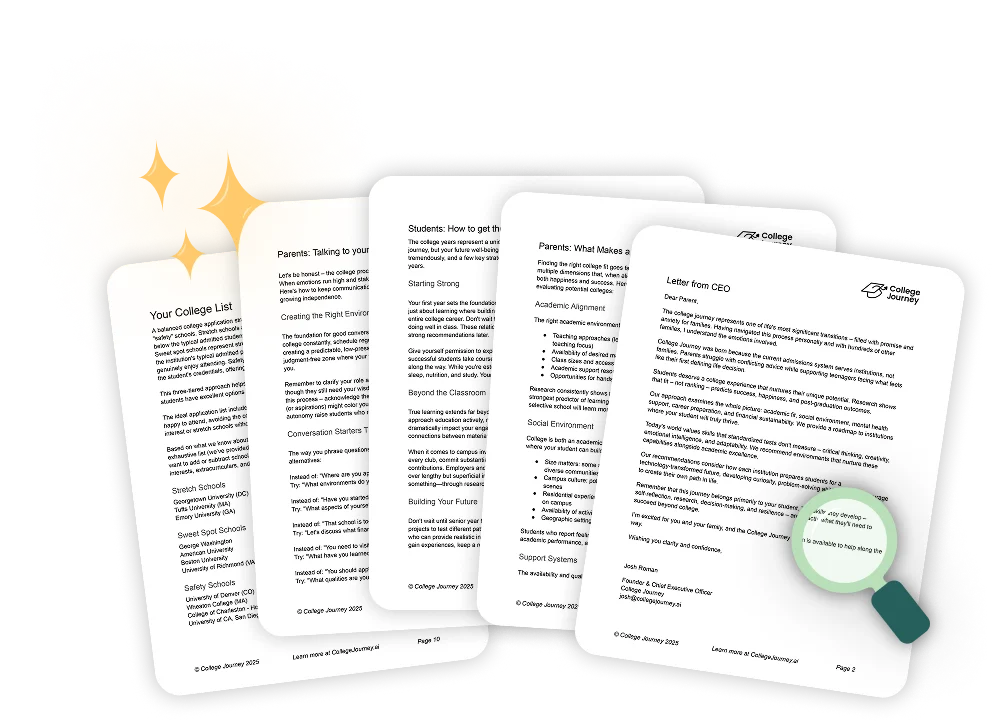Rent, groceries, transportation, and personal costs add up quickly in college. Without a plan, it’s easy to feel overwhelmed by money stress.
Most students use a mix of financial aid, part-time jobs, and family support to cover the cost of attendance. But figuring out where to start isn’t always simple. Should you take out student loans for rent and food? Are there scholarships that help with everyday expenses? The best option depends on your financial situation, lifestyle, and goals.
Key Takeaways
- Federal financial aid, including grants and student loans can be used to cover living expenses.
- Budgeting helps you manage costs and avoid unnecessary debt.
- On-campus jobs offer flexibility, while off-campus jobs may pay more.
- Side hustles and freelancing provide extra income with flexible schedules.
- Parents can support by covering small expenses or offering housing.
- Regularly review your budget and adjust as expenses change.
What Are the Common Living Expenses in College?
College living expenses cover more than just tuition and fees; understanding them can help you budget wisely. Room and board is often the biggest cost, whether living in a dorm with set fees or renting off-campus with added expenses like utilities and internet.
Food is another major factor. Meal plans offer convenience but may be expensive, while grocery shopping requires careful planning. Transportation costs vary depending on whether you commute, use public transit, or own a car with insurance and gas expenses.
Academic needs, such as textbooks, housing supplies, and technology, can quickly add up, especially for certain majors. Beyond these essentials, personal expenses like phone bills, laundry, and entertainment can sneak up if you’re not tracking them.
How Location Affects Your Cost of Living
Where you go to college greatly impacts how much you spend.
- Big Cities vs. Small Towns: Schools in major cities like New York or San Francisco have higher rent, food, and transportation costs. In contrast, smaller college towns tend to be much cheaper.
- On-Campus vs. Off-Campus Living: Dorms often include utilities and meal plans, making costs more predictable. Off-campus housing might be cheaper but comes with extra expenses like groceries and bills.
- Public vs. Private Colleges: Private universities in urban areas often have a higher cost of living, while public universities in suburban or rural areas tend to be more affordable.
Financial Aid Options to Cover Living Expenses
Overwhelmed by college research?
Let us help save time and find the perfect schools for your family.
Financial aid or FAFSA can help cover costs like housing, food, and transportation. You can use grants and loans to ease your financial burden if you qualify.
Using Student Loans for Living Expenses
Student loans cover essential living costs like rent, groceries, and transportation. There are two main types of loan options: federal and private loans.
Federal loans are the best option for most students. The Direct Subsidized Loan (for students with financial need) and the Direct Unsubsidized Loan (available to all students) can be used for housing, food, and other personal expenses. Federal loans come with lower interest rates and flexible repayment plans, making them easier to manage after graduation.
Private student loans from banks and credit unions can help if federal aid isn’t enough. However, they often have higher interest rates and stricter repayment terms, which can make them more expensive in the long run.
Some students also consider personal loans from private lenders or banks, but these usually have even higher interest rates and shorter repayment periods, making them a riskier option.
Before borrowing, be strategic. You should only take out what you need. Student loan debt adds up quickly, and repayment can take years.
Grants and Scholarships for Living Costs
Grants and scholarships are the best way to pay for living expenses because they aren’t repaid. While many students assume these funds are just for tuition, several programs can help with everyday costs. Making a financial plan and submitting a free application for federal student aid (FAFSA) is the first step to accessing these grants.
- Federal Pell Grant: This need-based grant helps low-income students cover college expenses, including housing and food and need not to be paid back
- State and University Grants: Many states and colleges offer grants based on financial need or academic performance. Check with your school’s financial aid office to see what’s available.
- Private Scholarships: Outside organizations offer scholarships for students based on academics, sports, leadership, or unique talents. Some scholarships are designed to help with housing, transportation, or other living expenses, which can reduce the amount of student loan money needed.
Millions of dollars in scholarship funds and federal student aid go unclaimed yearly simply because students don’t apply. The more scholarships you apply for, the better your chances of securing free money for college or university.
Working to Pay for College
It’s tough to balance school and a job, but it’s often necessary for money. Working part-time can help pay for living costs. It also gives you real-world experience that can boost your studies. Knowing the difference between on-campus and off-campus jobs is key. This helps you choose the best job for you.
On-Campus vs. Off-Campus Jobs: Which Pays More?
On-campus jobs are among the best options for students looking for flexible work. Since these jobs are located right on school grounds, there’s no commute, making it easier to fit work into your daily routine. Universities also structure these jobs with students in mind, so the hours are usually limited and designed to work around class schedules, allowing students to manage their federal student loan responsibilities.
If you qualify for Federal Work-Study, you may have access to even more on-campus job opportunities. Work-study jobs are specifically designed for students with financial needs and provide flexible schedules, ensuring that work never comes before academics.
On the other hand, off-campus jobs usually offer higher pay than on-campus positions, especially in industries like retail, food service, and hospitality. These jobs can provide a steady income but often require more time, effort, and commitment. Unlike on-campus employers, businesses outside of school may not always be as flexible with class schedules, making it harder to balance work and academics.
So, an on-campus job is a great option if you need a stable paycheck with a flexible schedule. It keeps you close to your academic environment, reduces commuting time, and provides a work setting that prioritizes your education. However, an off-campus job may be better if your priority is earning more money and gaining real-world work experience.
Best Part-Time Jobs for College Students
Choosing the right part-time job is important for your college life and money. Here are some jobs that are good for students:
- Retail associate: Gain customer service experience and flexible hours.
- Barista: Enjoy free beverages while working in a fast-paced environment.
- Internship related to your major: Apply classroom knowledge in real-world settings.
- Freelance gigs: Turn hobbies such as writing or graphic design into profit.
Finding the right part-time job can help you manage money. It also teaches you skills that are useful after college.
Budgeting and Money Management Tips for College Students
Managing your money wisely in college can make a huge difference. Without a plan, it’s easy to overspend on food, entertainment, or impulse buys. A smart budget helps cover those expenses while ensuring you can afford essentials like rent, groceries, and school supplies.
- Track your expenses: Before you create a budget, know where your money is going, especially if you plan to use student loans for living. Use budgeting apps like Mint, YNAB, or PocketGuard to monitor your spending. People who track their expenses often spend less on non-essential purchases, which can help when managing student loan funds.
- Create a realistic budget: List your income sources, including financial aid, part-time jobs, and family contributions. Then, break your expenses into needs (rent, groceries, transportation) and wants (eating out, entertainment, shopping). A simple rule to follow is the 50/30/20 rule—50% for needs, 30% for wants, and 20% for savings or debt repayment.
- Limit unnecessary spending: Small purchases add up fast. Cook at home, use student discounts, and avoid impulse buys to keep your spending in check.
- Use cash or prepaid cards: Swiping a debit or credit card makes it easy to overspend. Try using cash or a prepaid card for entertainment and dining out. You know it’s time to stop spending when the money runs out.
- Look for free or low-cost alternatives: Many activities on campus are free. Instead of paying for gym memberships, you can also use the campus fitness center. Borrow textbooks from the library or rent them instead of buying new ones. Take advantage of student discounts at restaurants, movie theaters, and public transportation.
- Save on food costs: Meal prepping and grocery shopping can save you hundreds of dollars each semester. Buy in bulk, shop at discount grocery stores, and use coupons to stretch your budget further. If you’re on a meal plan, use it fully before spending extra on takeout.
- Set up an emergency fund: Unexpected expenses, whether car repair or medical bills, will pop up. Start small—saving even $10–$20 per week can build a safety net over time. Aim for at least $500 to $1,000 in emergency savings by the time you graduate.
- Review your budget regularly: Your expenses and income may change throughout the semester, so revisit your budget every month. Adjust where needed and cut unnecessary spending to stay on track.
Alternative Ways to Pay for Living Expenses
Different types of financial aid and part-time jobs aren’t the only ways to cover your living expenses in college. If you’re looking for additional income or support, there are creative and lesser-known ways to help you stay afloat financially.
Side Hustles and Freelancing for College Students
If a traditional part-time job doesn’t fit your schedule, side hustles and freelancing can be a great way to earn money on your terms. Many students turn to flexible, high-paying gigs that allow them to work from anywhere.
- Freelancing: Platforms like Fiverr, Upwork, and Freelancer allow students to earn money by offering services in graphic design, writing, video editing, and more. Many freelancers earn $20–$50 per hour, depending on their skills.
- Tutoring: If you excel in a subject, tutoring can be a great way to make money. Sites like Wyzant and Chegg Tutors pay tutors an average of $15–$30 per hour.
- Selling Digital Products: Students with creative skills can design and sell printables, e-books, or stock photos on platforms like Etsy or Gumroad. Once created, these products generate passive income without ongoing work.
- Delivery and Gig Economy Jobs: If you have a car or bike, food delivery services like Uber Eats, DoorDash, or Instacart allow you to earn money on a flexible schedule. Some drivers make up to $25 per hour during peak times.
- Reselling Clothes or Textbooks: Selling unused clothes on Poshmark, Amazon, or Facebook Marketplace. Textbooks, too, can bring in quick cash.
With the right side hustle, you can boost your income without committing to a fixed work schedule, making it easier to balance school and finances.
Crowdfunding and Assistance Programs
Crowdfunding has become a popular way for students to seek financial help from their community. Platforms like GoFundMe and Fundly allow students to create personal fundraising campaigns. By sharing your story with friends, family, and social networks, you can raise small donations that add up over time.
Beyond crowdfunding, various government and nonprofit programs are designed to help students with essential living expenses. If you’re struggling to pay for food, rent, or transportation, these resources can offer financial relief:
- SNAP (Supplemental Nutrition Assistance Program): This federal program provides food benefits to low-income students who qualify. If eligible, you’ll receive funds on an EBT card, which can be used to buy groceries.
- 211.org: A free resource that connects students to local financial aid programs. Whether you need rent assistance, utility relief, or food support, 211.org helps you find services available in your area.
- Campus emergency funds: Many colleges offer hardship grants to assist students facing financial crises. These funds can cover rent, medical bills, or other urgent expenses. Visit your school’s financial aid office to see if you qualify.
How Parents Can Contribute Without Straining Their Finances
If your parents want to help with expenses but don’t have extra money to spare, there are ways they can provide support without paying for college or breaking their budget.
- Allowing you to live at home: Living there for even an academic year or two can save thousands in rent and food costs. Many students find this is the most practical way parents can help.
- Co-signing a low-interest loan: If student loans are necessary, having a parent co-sign a private loan can help you secure a lower interest rate, reducing long-term costs.
- Helping with essentials: Instead of giving cash, parents can cover specific expenses like health insurance, groceries, or a phone bill, which can help reduce the amount of federal student loan needed. This can make a big difference without adding financial strain.
- Using a 529 college savings plan: If your parents have a 529 plan, funds can be used for tuition and some living expenses, such as meal plans and campus housing.
Conclusion
Paying for living expenses in college can feel overwhelming, but with the right approach, it’s completely manageable. Whether you rely on financial aid, part-time jobs, side hustles, or smart budgeting, there are plenty of ways to cover your costs without falling into financial stress. Exploring grants, scholarships, and assistance programs can also help ease the burden and reduce the need of student loans for living expenses.
About College Journey
Managing college expenses is just one part of the journey—navigating the application process can be as overwhelming. That’s where College Journey comes in. With Alice, your AI-powered college counselor, you get step-by-step guidance from choosing the right schools to understanding how your GPA, test scores, extracurriculars, and essays impact your chances.
Whether you need help figuring out how your achievements shape your application, advice on standing out in activities, or tips for crafting a strong personal statement, Alice is here to assist. Plus, with personalized recommendations, college comparisons, and progress-tracking tools, College Journey makes the process simpler and stress-free.
The best part? It’s completely free to sign up!
FAQ
Can I negotiate my financial aid package?
If your financial situation has changed or you received a better offer from another school, you can submit an appeal to request additional aid. Contact your school’s financial aid office to discuss your options.
What are the best student bank accounts for managing money?
Many banks offer student-friendly accounts with no monthly fees, lower overdraft penalties, and budgeting tools. Look for accounts with perks like free ATM access and mobile banking features.
How can I save money on textbooks?
Instead of buying new books, consider renting, purchasing used copies, or using digital versions. Websites like Chegg, Amazon, and campus bookstores often have affordable options. Some schools also offer textbook rental programs or library copies.
Are there specific grants for housing costs?
Some schools and organizations offer housing grants or stipends for students with financial need. Look into emergency housing funds at your college and check for state-specific rental assistance programs.
What’s the best way to build credit while in college?
A student or secured credit card can help you build credit if used responsibly. Always pay your balance in full and avoid late payments to maintain a good credit score.




